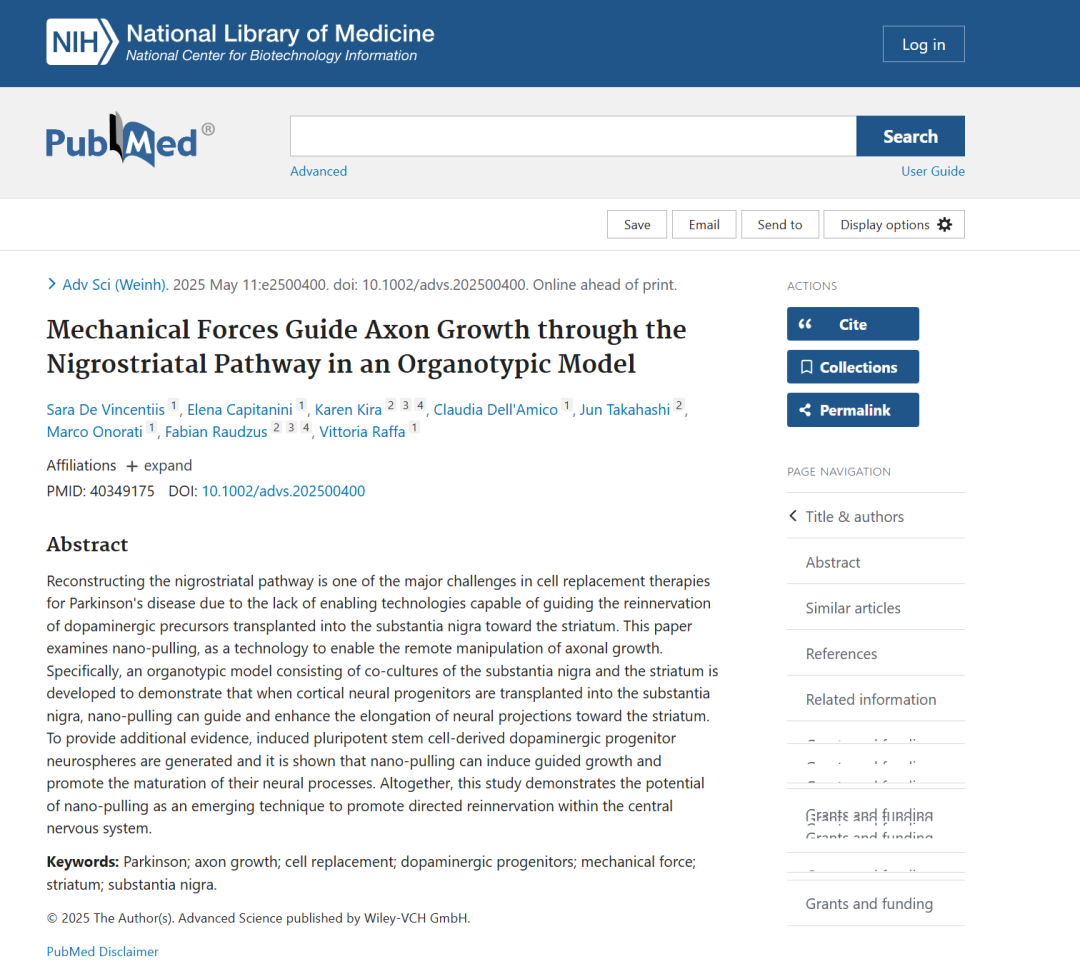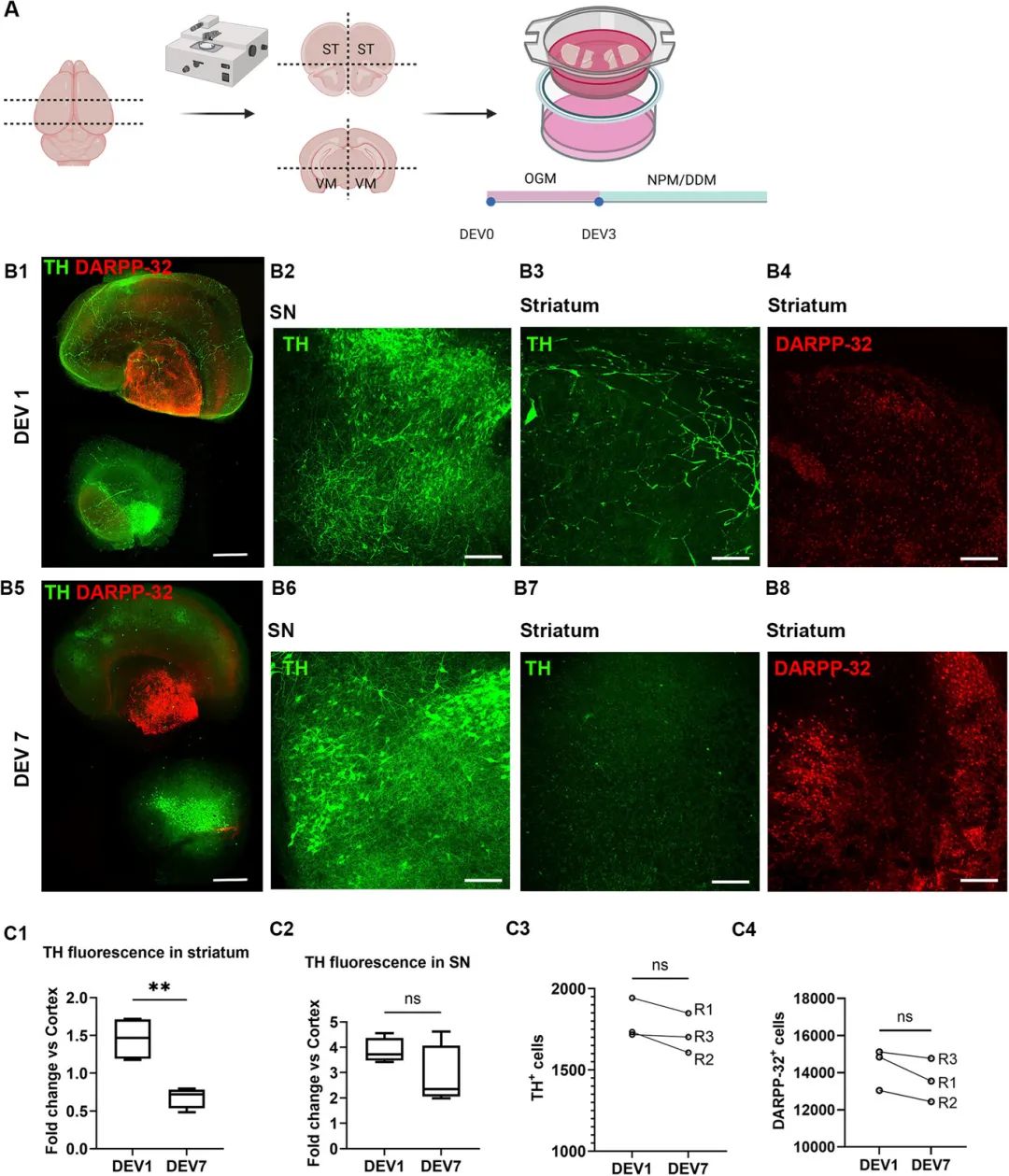
In the current era of rapid advancements in medical technology, pluripotent stem cell therapy, with its tremendous potential and continuous breakthroughs, has become the core focus of the global medical field.
Recently, this cutting-edge field has witnessed a series of exciting advancements - not only have they opened up brand-new treatment paths for many intractable diseases, but they have also injected strong impetus into the development of the entire regenerative medicine, making the hope of conquering difficult and complicated diseases increasingly clear.
01 Nanometer traction technology
Recently, a collaborative study led by Professor Vittoria Raffa from the University of Pisa in Italy and Assistant Professor Fabian Raudzus from the iPS Cell Research and Application Center of Kyoto University has revealed a new method for guiding axon growth using magnetic guided mechanical force. Aimed at enhancing the effectiveness of stem cell-based therapies for Parkinson's disease (PD) and other neurological disorders.

Although iPS cells have shown great potential in the treatment of Parkinson's disease, how to efficiently differentiate iPS cells into normally functioning nerve cells, especially dopaminergic neurons, has always been a research difficulty. Traditional methods are less efficient and it is difficult to precisely control the differentiation direction and quality of cells.
The research team has developed an innovative method that uses magnetic-guided mechanical force to guide axon growth, aiming to enhance the effectiveness of stem cell-based therapies for Parkinson's disease and other neurological disorders. This method is called "nano-traction" technology.
Nano-traction technology promotes the directional differentiation of cells by applying tiny mechanical forces to simulate the natural growth environment of cells in the body. Specifically, researchers utilized magnetic guidance mechanical force to precisely control the growth direction and speed of cells, enabling iPS cells to differentiate into nerve cells more efficiently. This method can not only enhance the efficiency of iPS cells differentiating into nerve cells, but also promote the maturation and functional recovery of nerve cells.
Axon growth inducer factor 1 (Ntn1) plays an important role in this process. Netrin-1 is a secreted protein that plays a key role in neural development. It can act as a chemical attractant or repulsion, guiding axons to grow towards specific target areas and helping to establish precise neural connection networks. By combining magnetic guidance with mechanical force, researchers can more precisely control the growth and differentiation of nerve cells.

Organ-type VM/ST model
The research on the differentiation of nerve cells by nano-traction iPS cells provides a brand-new idea and method for the treatment of Parkinson's disease. By using nanotechnology to simulate the natural growth environment of cells, the efficiency of stem cell differentiation into nerve cells can be enhanced, thus bringing new hope to patients with Parkinson's disease. In the future, with the further development and improvement of this technology, it is expected to play an important role in the treatment of Parkinson's disease and other neurological disorders.
02 iPSC for the treatment of ischemic brain injury
Recently, the Department of Neurosurgery of the Seventh Medical Center of the PLA General Hospital announced that the research project it undertook under the National Key Research and Development Program of the 14th Five-Year Plan - "Transplantation of Human Induced pluripotent Stem Cells (iPS Cells) Derived neural progenitor Cells for Ischemic Brain Injury" - has successfully completed the Phase I clinical trial and is now officially launching the recruitment of patients for Phase II.
This study employed the cutting-edge international iPS cell technology to obtain neural precursor cells (hNPC01) through directed differentiation, which were used to repair the neurological function damage caused by cerebral infarction. The results of the Phase I clinical trial showed that in patients with hemiplegia due to cerebral infarction aged 18 months to 5 years, this therapy demonstrated good safety and tolerability, and the motor function of the patients was significantly improved.
iPS cell-derived neural precursor cells are expected to become an effective treatment approach for neurodegenerative diseases (such as Parkinson's disease, Alzheimer's disease), spinal cord injuries, cerebral infarction and other neurological disorders. Transplanting these cells can promote nerve repair and functional recovery.
These new advancements in the field of pluripotent stem cell therapy all demonstrate the huge potential of this technology in conquering refractory neurological diseases and promoting the development of regenerative medicine, and also bring humanity another solid step forward on the road to defeating difficult and complicated diseases. In the future, with the continuous improvement of related technologies, pluripotent stem cell therapy is bound to bring hope of recovery to more patients.